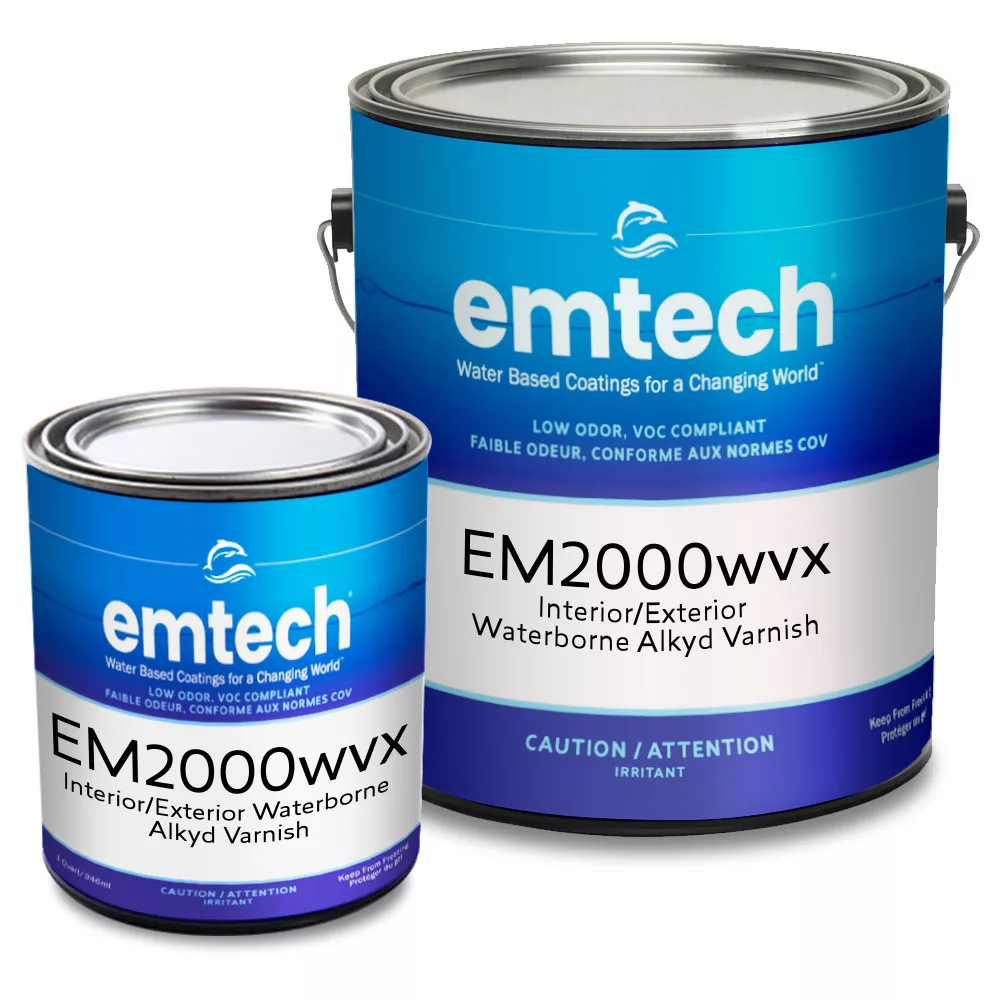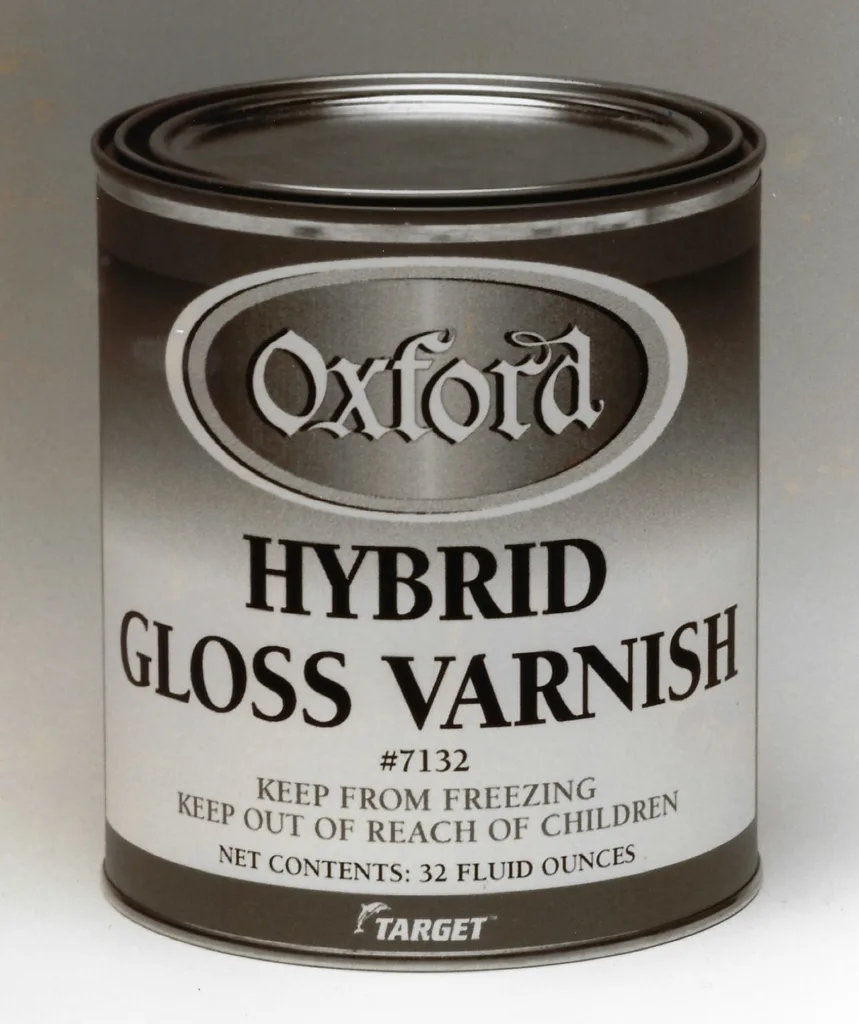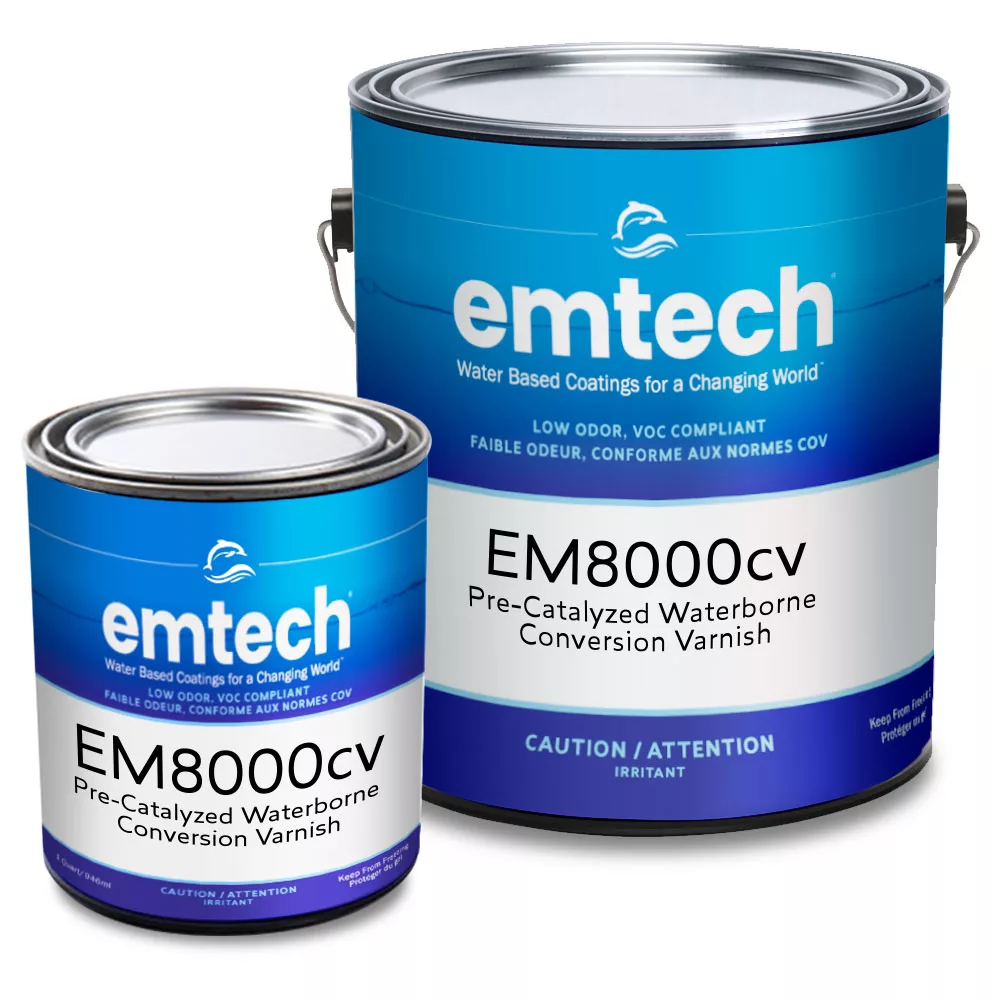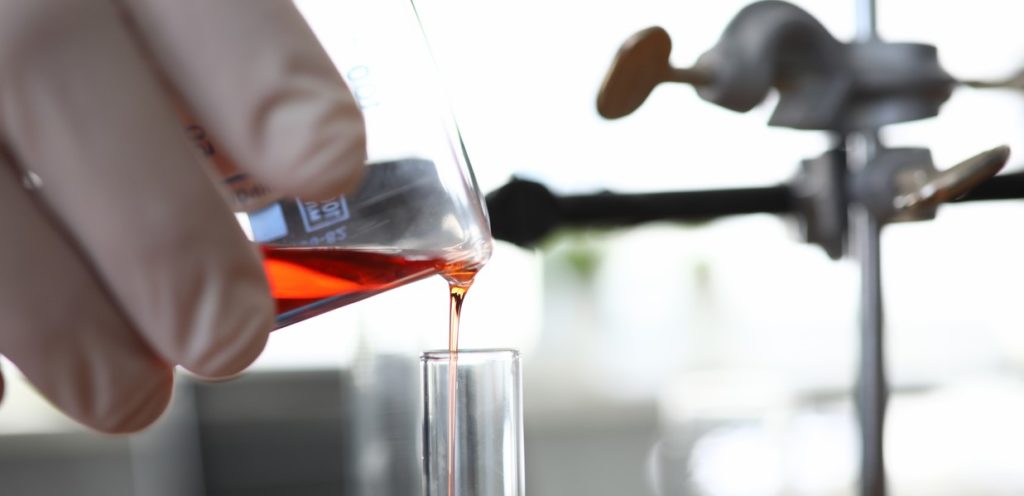Updated: July 2024
Varnish – it’s a word that has seen a lot of mileage over the centuries. It is perhaps the oldest type of coating chemistry man has kept in his artisan quiver of tools to protect a wide array of objects and surfaces. Can a water-based varnish exist in modern times?
Varnish is a resinous film former and was, and continues to be, made from various plant-based oils. With a few exceptions, varnish was always made from tung or linseed oil – with castor and safflower oil showing up later on the scene.
These oils are mixed with metals (called metallic driers) and different types of spirit oils to help the resin level and dry. Often used by artists to make paints — the alchemy of blending natural compounds grew into industrial paint and coatings chemistry.
It Has Been a Long Road to Get to Water-Based Varnish
When I started formulating in the water medium, the term “varnish” was used in the wood flooring and furniture industry to specify a level of durability and visual effect. In the early 1980’s we saw the rise of waterborne alkyd resins that were primarily designed for use on wood floor applications.
Our first version, the venerable Oxford HybriVar, was the forerunner of the Emtech® EM2000wvx Varnish.

HybriVar was a blend of hybridized tung oil and water-soluble solvents that allowed the varnish to dry quickly and clean up with water.
HybriVar was the first waterborne hybrid to be sold into the boatbuilding industry. Here’s a photo that brings back fond memories…

Now that we are well into the 21st Century we all know that each industry has specific types of waterborne alkyd finishes designed specifically for their intended use.
It is a simple list of products to choose from. You have…
Conversion varnish for cabinet and furniture applications…
Spar varnish for exterior marine and architectural use…
Floor-grade varnish (usually urethane) for residential and commercial use.
The key is to find the right type of varnish for the specific application and to match as closely as possible the performance level of the solvent versions with the new (now, not so new) waterborne formulas.
How We Now Define a Water Based Varnish
So, if varnish is historically oil-based, how can there be a water-based version…or “hybrids,” a term I applied to develop waterborne oils?
Below are my qualifiers. Some folks may argue my points, but that’s why we are here, yes?
Oil and water, by nature, do not mix. However, using some pretty cool chemistry, we can neutralize the oil resin and add water-soluble solvents…which remain in suspension! We are now on track to becoming water-based.
Please take note of the following information:
1. When viewing the Safety Data Sheet, pay attention to the solvents used. Some emulsifiers are employed to facilitate the mixing of oil and water. N-Methyl-2-Pyrrolidone (NMP) is one such organic solvent, but it poses a potential toxicity risk with prolonged human exposure.
2. A safer alternative to NMP is DMM solvent, or Dipropylene Dimethyl Ether. This cosolvent is considered safer for long-term exposure.
DMM belongs to the “P” (propylene) side of the glycol series and is significantly less toxic than the “E” (ethylene) series glycols, which have a history of being toxic upon both short- and long-term exposure, and contribute to low-level ozone pollution.
Therefore, the use of “P” series solvents, like DMM, can contribute to better air quality and make breathing easier for you and your neighbors.
3. Most water-based varnish manufacturers do not disclose the natural oil used in their products, possibly because they don’t consider it important.
Typically, in the case of waterborne alkyd resin varnish, they simply label it as “oxidized oil,” which essentially means they are not fully transparent about the ingredients, but the resin is typically based on tung, linseed, or castor oil.
A high-quality hybrid varnish usually contains a mix of oxidized oil and a secondary acrylic blend, such as our Emtech® EM8000cv.

4. As the film ages, observe the resin color. If the product is labeled as an oil/water hybrid or alkyd emulsion, you will likely notice a traditional straw/amber color shift in the film formation as it cures. Some waterborne hybrids are based on tung and castor resins, and these tend to have less color shift compared to the linseed-based versions. When in their raw format, various waterborne resins have different properties.
In summary, water-based varnish hybrids are user-friendly, and well-formulated blends can provide excellent brush-applied finishes and are great for spray applications.
Using a hybrid varnish helps control VOC emissions and they are not flammable, much to the delight of your insurance company and local fire official.
Yes, the benefits of a well-engineered water-based varnish are many: it provides excellent durability, luster, and a look and feel that closely matches old-world varnishes. It’s suitable for both restoration and new construction applications.
What are your experiences with water-based varnish? Feel free to share your thoughts or read what others are saying in the comments section below.
Jeff Weiss is the owner and chief chemist at Target Coatings, which has been dedicated to exclusively manufacturing water-based, low-VOC and HAPs-free wood finishes for nearly 40 years. Creator of the first water-based lacquer with 100% burn-in rivaling nitrocellulose lacquer, Jeff is considered one of the “founding fathers” of water-based technology and safety for refusing to accept the “status quo” and for refusing to expose others to chemicals he wouldn’t want to be exposed to. A U.S. Air Force veteran and former volunteer EMT, Jeff has always put service and safety first. Outside of work, Jeff is an avid fly fisherman who enjoys being immersed in and inspired by Earth’s natural beauty.



Off topic but I’ll ask anyway: I sometimes used an aerosol can charged with traditional lacquer (like Deft) to touch up a finish. There’s no need to set up spray equipment, the volume of finish needed is small, so it worked and was convenient. Do you think any of your finishes could be sprayed from an aerosol can and would the burn-in that is possible with something like EM6000 still occur so that the sprayed touch-up would combine with the film that was already laid down? This would be a good thing, if possible.
Ed – Thank you for your inquiry. We have looked into putting our water-based lacquers into an aerosol unit and we found that the spray caps are not designed for our types of formulas. However, we do look around for a successful “rattle can” option from time to time.
-JW-
This was a fabulous article nd I appreciate it. I love learning about products I intend to use or do use. If you would please an article about lacquer would be great I’ve been using the EM6000 and I really like it.
Thanks.
Greg – Thank you! Yes, I will be writing a piece on waterborne lacquers, soon.
-JW-
I finally tried your EM2000 for the first time. You guys nailed it. I wanted to know how well it can be brushed, so I hand applied it to a maple and walnut chessboard with a tiger maple frame. It’s just EM2000, no dye, no stain. First, the EM2000 reacted with the grain just like a traditional oil would, darkening and highlighting the figure. Second, it added just a little bit of amber, which I wanted, even with the undyed maple. When I brushed it on, my first though was, “Oh, no.” But, it tightened up as it dried and gave a uniform coating. It pretty much looks like it was sprayed. This all worked in a 65F shop. After 3 hours, I can scuff with 320 or 600 and get white powder. Great stuff. I’m looking forward to using it more. A couple questions:
1. Do coats burn into each other? If I have to level a surface with abrasive, is there enough burn in to reduce or eliminate the risk of ghosting?
2. Is the amber “cooked in” and what I see is what I’ll get, or will the amber deepen over time?
Ed – Thank you for sharing your EM2000wvx experience with us! Yes, the EM2000 will burn-into itself within a 100 hour recoat window. After 100+ hours the adhesion properties will still be very good but the resins will begin to develop a resistance to the solvents in the formulation. I suggest lightly wiping the cured varnish with a water/alcohol mixed of 1:1 to soften the film, then scuff sand with 400 or 600-grit paper. You do not need to use a course/heavy grit schedule Less is more in this case.
Regarding the amber tone of the cured varnish – this is created by the alkyd resin oxidizing over time. It is not a dye or pigment, but an actual color change created by the exposure to oxygen.
Thank you for your continued interest and support!
-JW-
I build music instruments, and use EM2000wvx as a wiping varnish. Though the alkyd is much better that the original Oxford hybrivar at wetting the wood and bringing out its colors, I prefer to set the color with three shellac sealer coats, rubbed out to 220G.
To get the texture right for wiping, I dilute it 1:H2O::4:Var, and use old t-shirt material as pads (lint-free) about 4″ square, folded to fit my fingertips. To apply, I dip the pad and squeeze out excess between my gloved fingers (not against the bottle sides, to avoid dry film formation which will flake into the varnish quickly) and wipe each coat sparingly.
By the time I wash my application gloves (to avoid dry film formation there) and return, the coat is dry and ready for the next. I can apply 8 coats in about two hours. Overnight the varnish will cure enough for a final rub-out with #0000 steel wool. If I wait longer than the next day to get to that job, the varnish will already be too hard to rub out! A thin hard finish that does not interfere with the musical response of the instrument.
This varnish has the burn-in qualities of shellac and lacquer, so I can wet-sand level as necessary without witness lines, after completely hard. And this is such a simple, reliable application method, my students pick it up quickly.
Dwain,
Thanks for your comment and adding detailed insight into your finishing process. Very much appreciated.
-Seth Kline